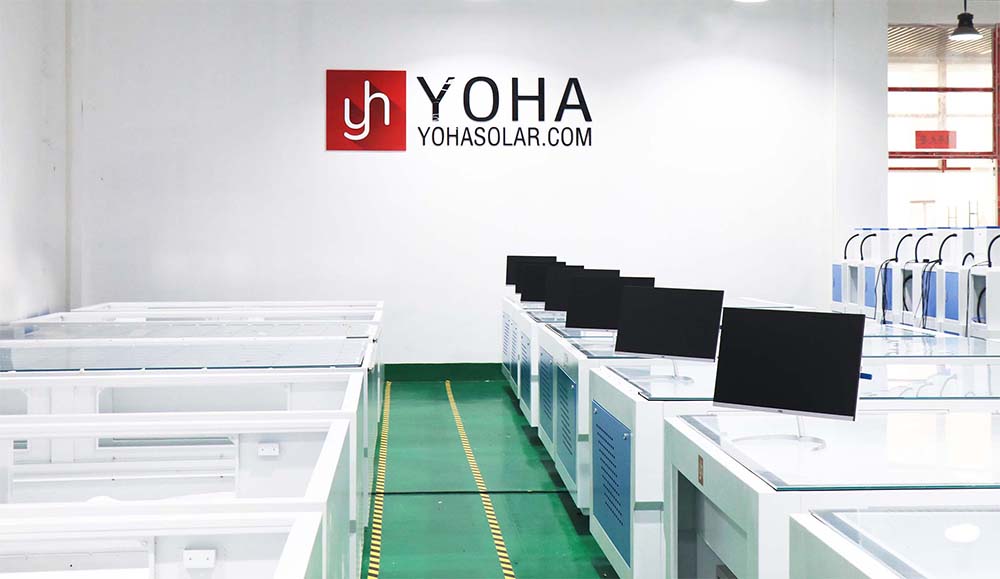Welcome to Wuhan Yoha Solar Technology Co., Ltd!
common problem
Site Map
Language:
 Chinese
Chinese
 English
English
Welcome to Wuhan Yoha Solar Technology Co., Ltd!
common problem
Site Map
Language:
 Chinese
Chinese
 English
English
Solar panels function like intricate hearts, continuously converting sunlight into electricity. Their health—particularly whether power degradation has occurred—directly dictates the vitality and return on investment of the entire PV system. How can we rapidly and accurately diagnose the "vitality" of this "heart"? I-V curve testing serves as the PV industry's most essential and efficient "electrocardiogram" tool. Mastering the interpretation of I-V curves empowers precise insight into subtle component performance changes, enabling proactive problem prevention.
I. Understanding the PV Module's "EKG": The I-V Curve
Basic Shape: Depicts the relationship between a PV module's output current and its operating voltage. The horizontal axis (V) represents voltage, while the vertical axis (I) represents current. The curve typically starts at the top-right "Open-Circuit Voltage" (Voc) and ends at the bottom-left "Short-Circuit Current" (Isc).
Key Parameters:
Open-Circuit Voltage (Voc): The maximum voltage under no load, reflecting PN junction characteristics and material quality.
Short-Circuit Current (Isc): The maximum current under short-circuit conditions, primarily influenced by light intensity and cell area.
Maximum Power Point (MPP): The point on the curve where the product of voltage and current is greatest, determining the module's actual output capability.
Fill Factor (FF): A critical metric indicating curve "fullness"; a higher value signifies more ideal component performance.

II. Power Degradation: The "Signals" Hidden Within the Curve
Power degradation is like the component's silently diminishing vitality, arising from complex causes:
Initial Light-Induced Degradation (LID): Slight efficiency drop in new modules due to boron-oxygen complexes.
Potential Induced Degradation (PID): Performance loss caused by ion migration under negative bias conditions.
Aging Degradation: Cumulative effects like encapsulant yellowing and cell metallization corrosion during long-term operation.
Hot Spot Effect: Overheating damage triggered by partial shading or defective cells.
Environmental Erosion: External factors like sand abrasion, acid rain corrosion, and UV degradation.
Microcracks & Broken Fingers: Microscopic damage reducing current collection efficiency.
III. Deciphering the Curve Code: Typical "Traces" of Degradation in the I-V Curve
When degradation occurs, the I-V curve exhibits distinct abnormalities, akin to irregular waveforms on an EKG:
Overall Current/Voltage Reduction:
Significant Isc Drop: Like weakened heart pumping, often caused by PID, severe soiling, microcracks, or overall efficiency decline.
Significant Voc Drop: Like insufficient heart pacing voltage, often indicating cell aging, encapsulant failure, or severe PID.
Reduced "Fullness" - Lower Fill Factor:
The curve contracts inward, and the MPP shifts noticeably downward, like weakened heart contraction. This is the most common degradation sign, potentially caused by:
Increased series resistance (e.g., ribbon aging, interconnect corrosion).
Decreased shunt resistance (e.g., edge leakage, PID-induced shunting).
Reduced cell efficiency or localized failure.
Curve "Distortion":
Steps or Kinks: Like abnormal EKG fluctuations, often indicating hot spots or severe microcracks/broken fingers blocking current in cell strings.
Curve "Collapse" or Localized Depressions: May result from widespread microcracks, severe localized soiling, or complete failure of individual cells.
IV. Practical Diagnosis: Step-by-Step Degradation Assessment via I-V Curve
Standardized Testing:
Use a professional I-V curve tracer.
Test under Standard Test Conditions (STC: 1000W/m², AM1.5 spectrum, 25°C cell temp) or ensure data is accurately corrected to STC.
Ensure the module surface is clean and unshaded.
Data Comparison (Most Reliable):
Golden Rule: Overlay the current I-V curve with the module's original factory I-V curve or a curve from a healthy module of the same batch. Any morphological difference (downward shift, contraction, distortion) directly indicates performance change.
Quantify Degradation: Calculate the percentage difference between the current MPP power and the initial rated power to determine the Power Degradation Rate (e.g., initial 300W, current 285W = ~5% degradation).
Parameter Analysis (Without Baseline Data):
Compare measured Voc, Isc, MPP power, and FF against the nameplate rated values (corrected to STC). Values significantly below rating suggest degradation.
Observe Morphology: Scrutinize the curve for abnormalities like steps, depressions, or distortions.
Fault Location Support:
Combine with EL Imaging: When the I-V curve shows anomalies (e.g., steps, severe FF drop), Electroluminescence (EL) imaging can visually pinpoint the specific failing cells or crack locations causing the issue.
V. Application Value: Beyond Diagnosis
Mastering I-V curve analysis provides:
Accurate Performance Assessment: Quickly determine current module status and degradation level, moving beyond guesswork.
Root Cause Analysis: Use curve features to preliminarily identify causes like PID, aging, hot spots, or other issues, guiding further action.
Quality Acceptance Criteria: A vital method for inspecting new modules upon delivery or after installation.
O&M Decision Support: Identify problematic modules for timely replacement/repair, preventing the "weakest link effect" from dragging down the entire string.
Power Loss Investigation: A key step in determining if system underperformance stems from module degradation itself.
Transaction Pricing Reference: I-V test data is central to valuing PV plants or second-hand modules in transactions.
Conclusion
The I-V curve acts like an open logbook, silently documenting each PV module's journey from new to seasoned. For O&M personnel and asset managers, the ability to interpret this logbook equates to taking the initiative in PV system health management. The next time you stand before rows of PV arrays, remember: one precise I-V curve test speaks louder than a thousand speculative words—the module's true condition is vividly revealed within the curve's rises, falls, and turns. Schedule regular "EKG" check-ups for your PV system. Ensure the conversion of every sunbeam is traceable and safeguard the long-term value of every investment.
keywords:TOP
18086473422
MESSAGE
